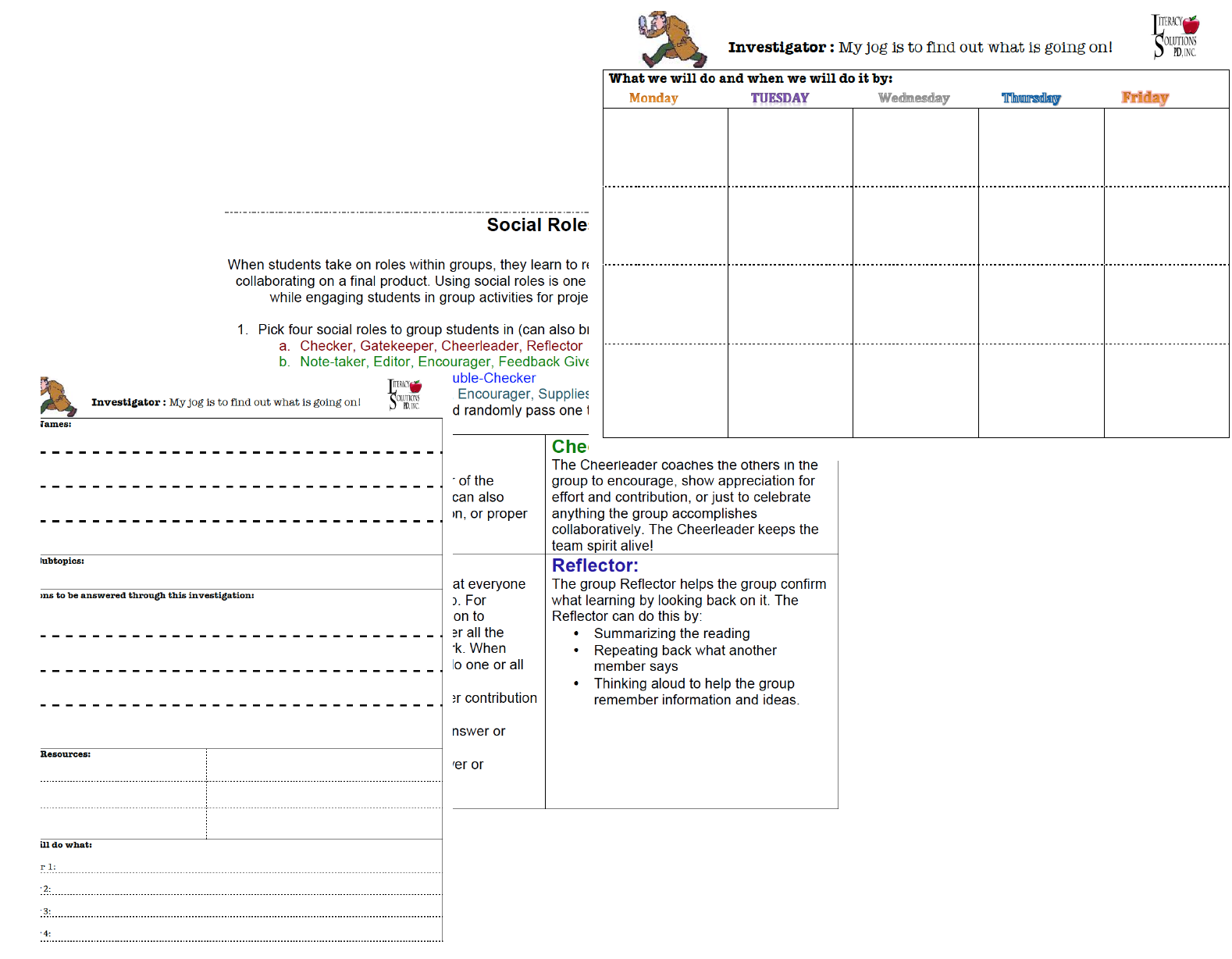Culturally Compatible Environments That Foster Learning
Completion requirements
View
x
4. Lesson Ideas and Strategies
Cooperative Learning Lesson Ideas and Strategies

Printable Lesson Ideas - See Course Objectives | Research | Materials folder
Numbered Heads Together – A game for quiz or test preparation, not to be used if competition could be problematic
- Arrange for teams of 4 or 5 members
- Give each team a number for individual accountability of learning
- Present problems or question to the whole class, allowing time for teams to come up with answers or solutions
- Call out a number and team member with that number step forward to answer the question or explain the problem’s solution
- Each team that responds correctly gets a point, with tallies kept on the board as the games progress.
Think-Pair-Share
- After reviewing some content or reading a chunk of text, instruct students to informally find a partner in the classroom.
- Present students with an idea and give them a few moments to write about it in their journals. Younger students might draw a picture and explain their idea.
- Have students put their pens down and discuss the idea (or pictorial representation) in class, with all students contributing to the discussion.
- After a few rounds of think-pair-share, instruct students to write down the names of 2 or 3 other students who “gave them a good thought or idea”, find one of the people on their list and share another idea.
- Variation: Before bring it back to a whole class discussion, have students find one other student to “give one and get one” from, giving away one thought and getting a new thought before moving on to someone else. Do this for 3 to 5 minutes before bringing it to a full class discussion.
Group Investigations
Group investigation has its roots in the work of John Dewey (1938-1970), with the belief that discover leads to a democratic society (Unrau, 2008). Here is an approach for structuring group investigation in an inclusive classroom:
- Organize students into teams around a broad topic. Present the class with a driving, big idea question.
- Provide students with resources related to the topic and to subtopics to choose from and research (student choice).
- Include Internet sites with pre-selected bookmarks
- Have students rank their choices from 1 to 3 before making a decision
- Describe and discuss each subtopic fully so that students are clear on what resources are available, what each topic means, and how it relates to the main theme.
- Instruct students to meet in their teams to problem solve how they will complete the research on their subtopic.
- Provide students with lists to complete their plan on to include:
- What resources will be used
- How much time will be spent
- How they will report the information (in a journal, on a prepared template, in the computer, etc.)
- How they will coach each other and/or hold each other accountable
- Provide students with lists to complete their plan on to include:
- The teacher reviews each group’s plan and subtopics for approval. Once all members have gathered their information, they take turns presenting their findings. Each group answers the big idea question, based on conclusions drawn from all of their research.
- Optional: Groups present an overall report via PowerPoint, Prezi or the like for presentation to the entire class.
References:
- Marzano, R. J. (2003). What works in schools: Translating research into action. Alexandria, VA: Association for Supervision and Curriculum Development
- Radencich, M. C., L. J. McKay, and J. R. Paratore, "Keeping Flexible Groups Flexible," 27-29.
- Tomlinson, C. A. (2003). Fulfilling the Promise of the Differentiated Classroom. Alexandria, VA: Association for Supervision and Curriculum Development. p. 64, 65
- Unrau, N. (2008). Content Area Reading and Writing: Fostering Literacies in Middle and High School Cultures. Upper Saddle River, NJ: Pearson Education, Inc.
